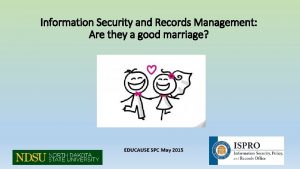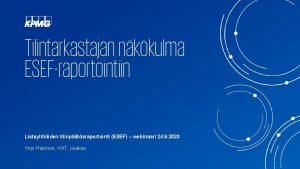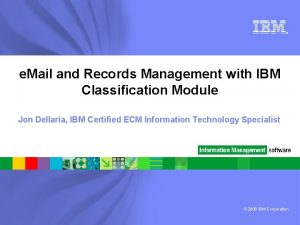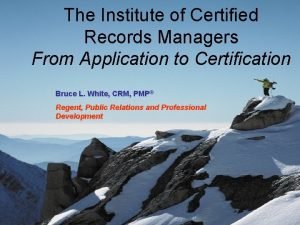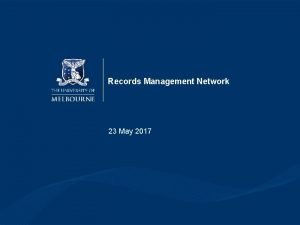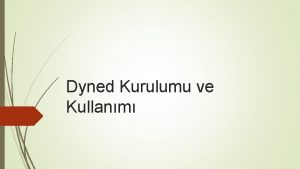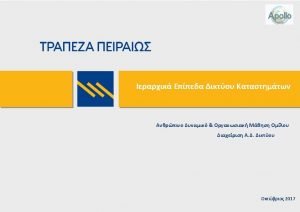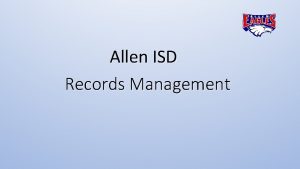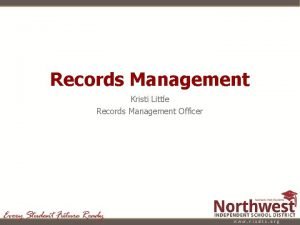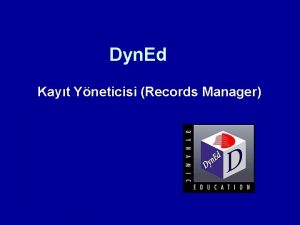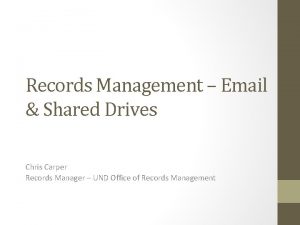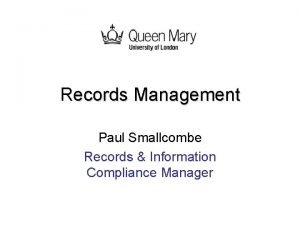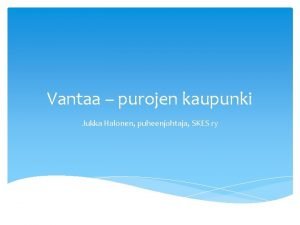Records Management Chris Halonen University Records Manager Chairs








- Slides: 8

Records Management Chris Halonen, University Records Manager Chairs’ Compliance Workshop, 10 January 2013

University records • All information created, received, & kept by the university, its units & employees, documenting university activities, regardless of format/medium, including: – Email – Letters & memos – Minutes of meetings – Photos, digital images, video – Social media: tweets, Facebook pages

What’s excluded? • Faculty members’ teaching materials, research, scholarly works (Policy 73, IP rights) – Only documentation from assigned tasks are university records • Personal email & documents, clearly identified & stored as such

Basic principles of RM program • All university-owned information has a lifecycle: – created or received in some work activity, – kept for reference or to meet external requirements (e. g. , FIPPA) and – destroyed when no longer needed by the university • Records are organized/classified by these work activities • The lifecycle, organization, and units responsible for records are documented in the Wat. Class retention schedules (currently 60% complete) • We set priorities for the RM issues we deal with first, but the RM program applies to all university records

• • • Wat. Class: 12 university functions Administration (AD) Campus Services (CS) External Relations and Communications (ER) Finance (FN) Governance (GV) Human Resources (HR) Health, Safety, and Security (HS) Information Management (IM) Property and Facilities (PF) Research Management (RS) Student Management (ST) Teaching and Learning (TL)

Purpose of the RM program • Meet internal needs for information as efficiently as possible • Demonstrate accountability to our constituencies • Comply with statutory/regulatory requirements • Provide evidence of processes or transactions, admissible in legal proceedings

Policy 12: roles/responsibilities • Secretary & CIO: overall responsibility • University Records Manager: – Design & promote RM program – Provide advice & guidance • Chairs: – “Unit managers/heads are responsible for ensuring that their unit’s records are accurate, complete, and retained in accordance with the university’s approved retention schedules; and for authorizing disposal actions (destruction or transfer to the university’s archives) at the end of the retention period. ”

How to proceed? • Regularly destroy transitory records when no longer needed • Organize records by the activities they belong to, & document the records you have – File plan for paper files – Directories & folders list, for shared drives & Share. Point • Identify retention periods for records, from the Wat. Class retention schedules (consult with me on this) • Destroy records at the end of their retention period, and document their destruction – A very small percentage of records go to the University Archives

